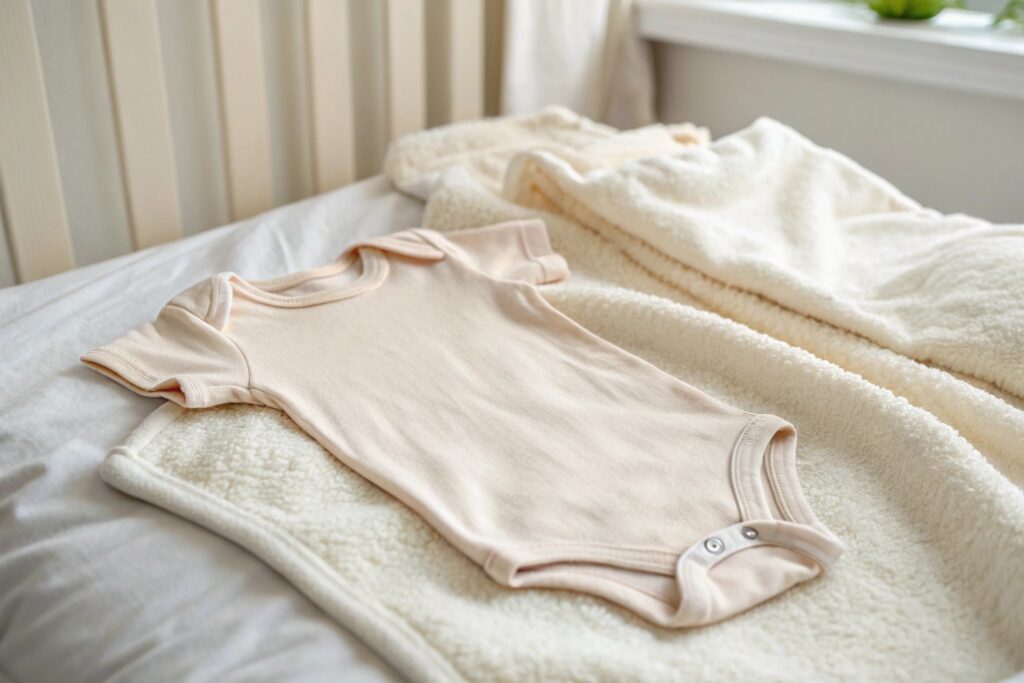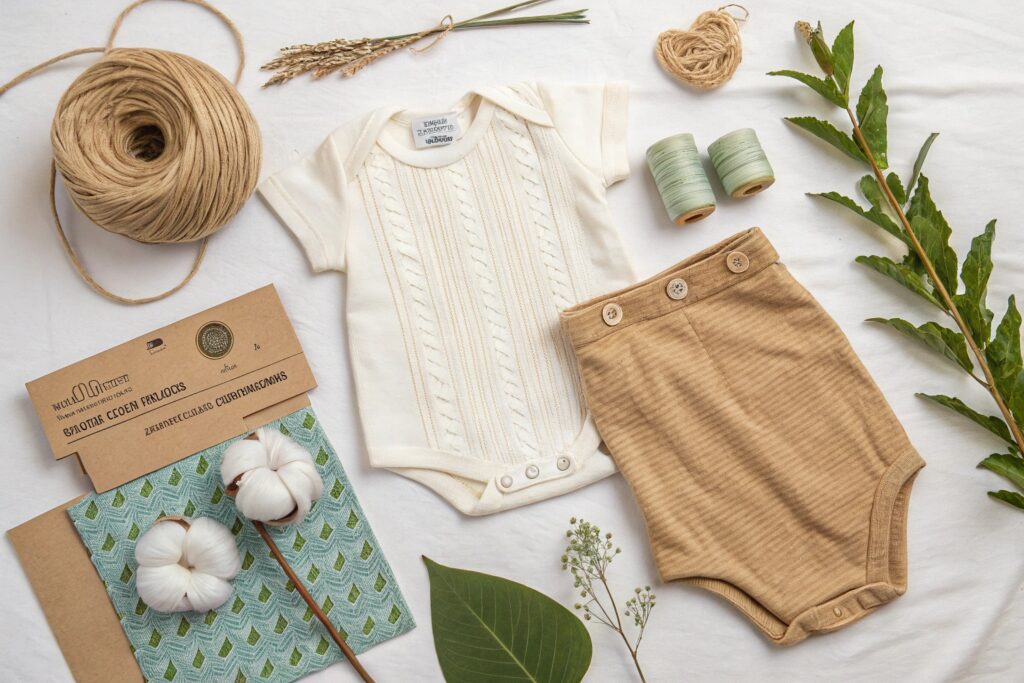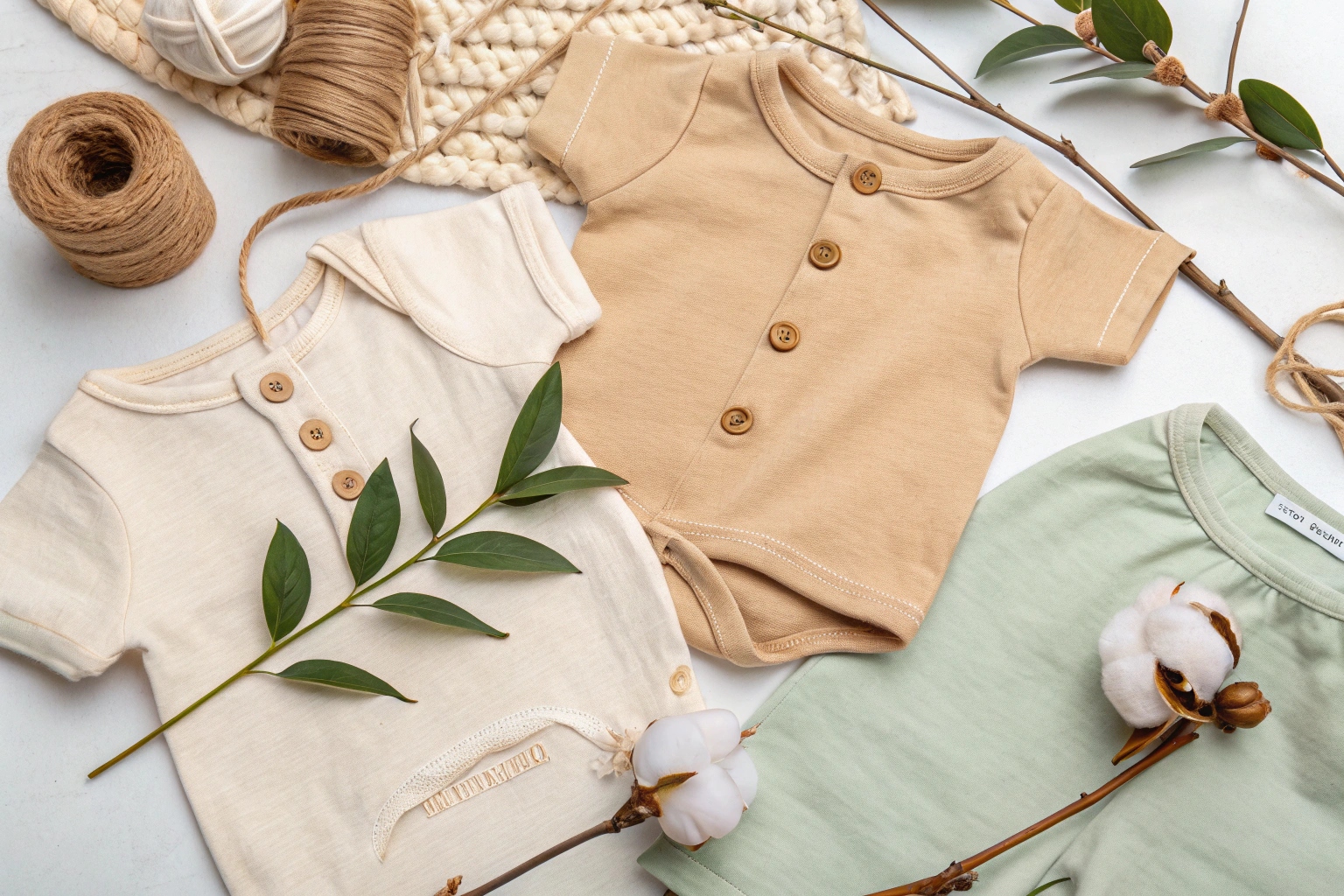More brands are going green—but is it just a trend, or is there real impact? Eco-friendly fabrics go beyond buzzwords. They help fix the damage fast fashion has left behind.
Eco-friendly fabric helps the environment by using fewer chemicals, less water, and creating less waste. These materials are safer to produce, healthier to wear, and better for long-term sustainability.
Fashion doesn’t have to harm the planet. With the right fabrics, we can design clothing that supports both the earth and future generations.
Benefits of Organic Cotton in Kidswear Production
Kids have sensitive skin and need clothes that are gentle, clean, and breathable. That’s where organic cotton comes in—it’s soft, safe, and grown without harmful chemicals.
Organic cotton benefits kidswear by being hypoallergenic, breathable, and grown without pesticides. It protects both the environment and children’s delicate skin.

How does organic cotton improve safety and comfort in children’s apparel?
When we make kidswear at Fumao Clothing, our first concern is skin sensitivity. Babies and toddlers often have allergic reactions to clothing—especially when it’s made with conventional cotton soaked in synthetic dyes and pesticides. Organic cotton avoids this problem entirely.
Here’s why:
- No harsh chemicals: Organic cotton is grown without synthetic pesticides or fertilizers. This reduces residue on the final fabric, making it much safer for children.
- Naturally breathable: The fiber structure of organic cotton is more open, allowing better airflow. That means less sweat, fewer rashes, and more comfort.
- GOTS certified: We use GOTS-certified yarns, which ensures every step—farming, spinning, dyeing, and finishing—meets strict ecological and labor standards.
Several of our European clients have shifted all their babywear lines to organic cotton. They’ve seen a drop in skin-related complaints and an increase in product reviews mentioning “softness” and “safety.”
What role does organic cotton farming play in environmental preservation?
The benefits extend beyond just the garment. Here’s what organic cotton farming looks like:
| Factor | Organic Cotton | Conventional Cotton |
|---|---|---|
| Pesticide use | None | High—uses up to 16% of global pesticides |
| Water consumption | ~70% less | Extremely high, leading to water stress |
| Soil health | Regenerative farming methods | Often leads to soil degradation |
| Biodiversity | Supports pollinators and insects | Harms beneficial species |
By supporting organic cotton, buyers aren’t just buying a fabric—they’re backing a healthier planet. From field to finish, organic cotton respects nature’s balance. And for businesses like ours at Fumao Clothing, it offers a trusted foundation for ethical sourcing.
How Sustainable Fabrics Reduce Environmental Impact
Every fabric choice affects the planet—from the water used to grow it, to the chemicals used to dye it, and even how it breaks down in landfills.
Sustainable fabrics reduce environmental impact by using fewer resources, producing lower emissions, and biodegrading faster. They’re a cleaner choice from production to disposal.

How do eco-fabrics like bamboo and hemp conserve resources during production?
Let’s look at the numbers. Bamboo and hemp require significantly fewer inputs than cotton or polyester.
- Bamboo grows fast without the need for replanting or pesticides. It can thrive with minimal water, and some species grow over 1 meter per day.
- Hemp is even tougher—it improves soil quality, absorbs CO₂ faster than most crops, and uses half the water of cotton.
Here’s a quick breakdown:
| Fabric | Water Needed (per kg) | Pesticides Used | Time to Grow | CO₂ Absorption |
|---|---|---|---|---|
| Bamboo | ~100 liters | None | 3–4 months | High |
| Hemp | ~300 liters | None | 3–5 months | Very High |
| Cotton | ~10,000 liters | High | 6–8 months | Low |
| Polyester | None (synthetic) | N/A | Petroleum-based | Negative |
We’ve started working with hemp fabric for some children’s wear trials in North America. It’s strong, naturally UV-resistant, and feels surprisingly soft after the right treatment. The demand is growing as buyers realize how low-impact these materials can be.
What happens to sustainable textiles at the end of their life cycle?
Unlike synthetic fabrics that take 200+ years to decompose, most sustainable materials break down naturally.
For example:
- Organic cotton takes 5–6 months to decompose.
- Linen and hemp take around 2–3 months.
- Bamboo viscose, when made without harsh chemicals, also biodegrades within a year.
This reduces landfill pressure and prevents microplastic pollution. Our clients often ask for compostable hangtags and packaging too—because every piece matters.
In Fumao’s DDP bulk model, we now offer full eco-packaging options. That means your customers receive not only a sustainable garment but also a clean, zero-waste unboxing experience.
Why Eco-Friendly Textiles Matter to Modern Consumers
Today’s customers care about where their clothes come from—and what they’re made of. They don’t just buy products; they buy values.
Eco-friendly textiles matter to modern consumers because they reflect responsible choices. Shoppers prefer sustainable, transparent, and ethical brands.

How are buyer habits shifting toward sustainable fashion?
Recent surveys show over 70% of Gen Z and Millennials prefer to buy from brands that align with their values. For many, that means transparency, environmental care, and ethical sourcing.
Platforms like TikTok, Instagram, and even Google Shopping now highlight eco-badges and certifications. Consumers aren’t just reading labels—they’re researching materials, carbon footprints, and company values.
At Fumao, we’ve noticed a spike in LinkedIn and TikTok leads who ask about GOTS, OEKO-TEX, and our factory’s environmental practices before they even ask about price. That shift tells us sustainability isn’t a niche anymore—it’s the baseline.
How can B2B apparel buyers use eco-textiles as a brand strategy?
For bulk buyers, using eco-fabrics is a clear selling point. It helps differentiate in a crowded market and opens doors to premium price points.
Here’s how it works:
| Strategy | Result |
|---|---|
| Eco-labeling (e.g., GOTS, FSC) | Builds consumer trust and compliance |
| Highlighting traceability | Adds brand story and emotional connection |
| Sustainable packaging & tags | Completes the eco-experience |
| Communicating values via marketing | Drives loyalty and repeat purchase |
Some of our partners in Europe now sell collections with “zero compromise” messages—sustainable fabric, ethical labor, carbon offset logistics. We help them build those collections from fiber to finished product.
The result? Better reviews, lower return rates, and stronger brand equity.
Comparing Eco Fabrics vs Traditional Materials in Fashion
Fashion used to be about speed. Now, it’s about responsibility. Comparing fabric choices shows how far we’ve come—and where we still need to go.
Eco fabrics outperform traditional materials by reducing harm, conserving resources, and offering long-term sustainability. They’re the smart choice for the environment and business.

How do traditional materials like polyester and conventional cotton fall short?
Let’s break down their drawbacks:
- Polyester: Made from crude oil. It sheds microplastics with every wash. It doesn’t biodegrade and adds to ocean pollution.
- Conventional cotton: Uses more pesticides than any other crop. It drains freshwater sources like the Aral Sea. It’s chemically intensive to bleach and dye.
These materials were invented for durability and mass production—but with today’s environmental costs, they’ve become liabilities.
Here’s a comparison:
| Feature | Eco Fabrics (Organic/Bamboo/Hemp) | Traditional Fabrics (Polyester/Cotton) |
|---|---|---|
| Water Usage | Low | Very High |
| Chemical Input | Minimal | High |
| Biodegradability | Yes (within 6 months–1 year) | No (100+ years) |
| Microplastic Pollution | None | Yes |
| Soil Impact | Regenerative | Degrading |
As a clothing manufacturer, we’ve had to rethink our supply chain. Not just because our clients demand it—but because it’s the right thing to do.
What’s the long-term business case for switching to eco materials?
Switching to eco-fabrics isn’t just ethical—it’s practical:
- Lower Regulatory Risk: Many countries are adding import duties or bans on harmful textiles.
- Market Expansion: Eco-certifications open up access to ethical retailers and eco boutiques.
- Customer Loyalty: Buyers love brands that align with their values.
- Supply Chain Transparency: Easier to trace, track, and promote.
Several of our U.S. partners report better placement on shelves like Whole Foods and boutique chains after switching to eco lines. In the long run, this isn’t just a trend—it’s a better business model.
Conclusion
Eco-friendly fabrics help the planet, protect people, and offer a stronger future for fashion. Choosing sustainable textiles is the smartest move for both the environment and your business.










